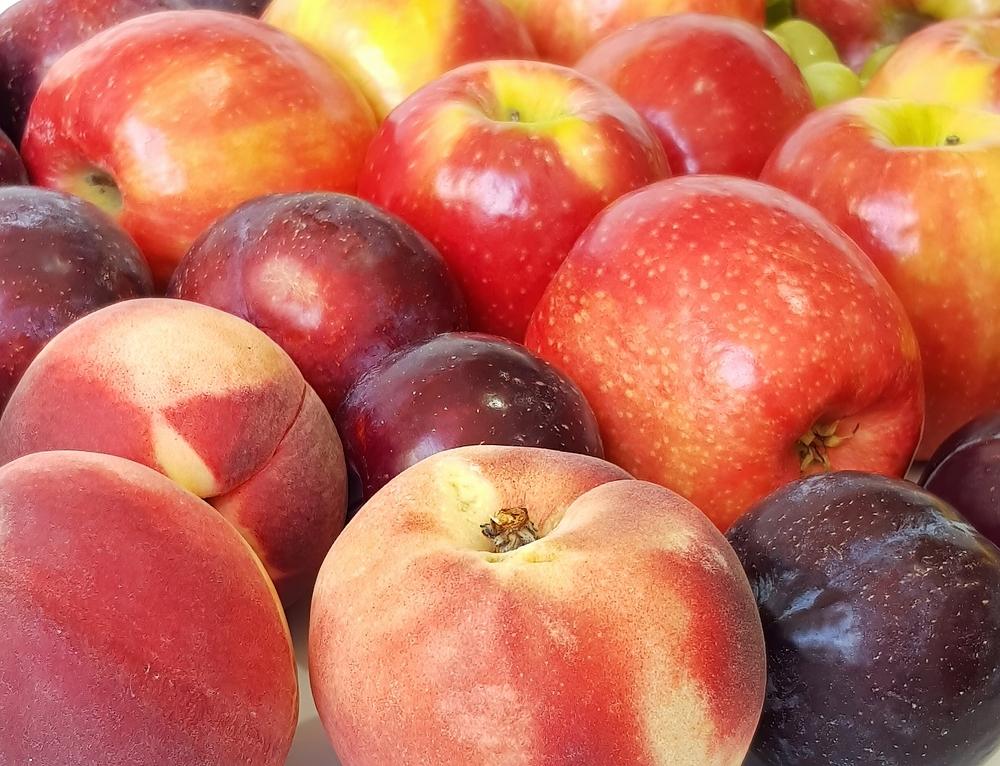One of the buzz phrases these days (with which I heartily agree!) is “paying it forward,” making some sort of investment now for rewards in the future. I’m here to talk about “planting it forward,” as in planting for a lovely harvest, not this year but in seasons to come. Fruit trees are a perfect example.
When I was a kid growing up in Boulder, my dear Swedish grandmother had a dozen or so apple trees in her very large “back yard”. She nurtured all three of her children and a variety of apples and berries for her roadside stand.
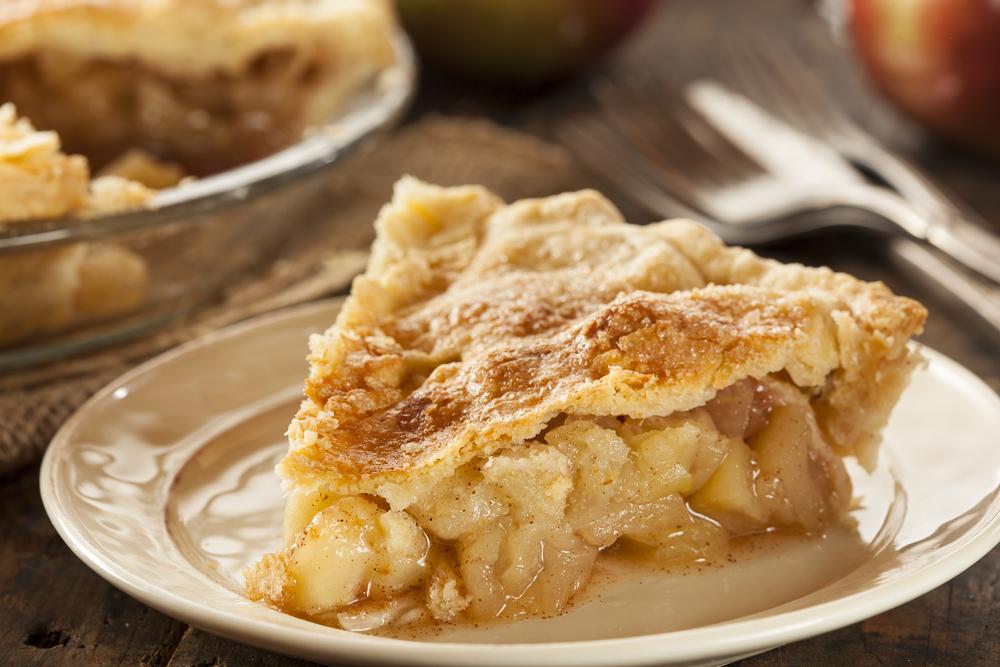
In my opinion, the apple pies that came out of her kitchen have never been matched to this day, and the memories of those times are irreplaceable. Maybe that’s why I’m a bit sentimental about the whole concept of even the smallest backyard “orchard” of just one or two trees.
Perhaps there are memories waiting for you and your family in the simple act of planting your own fruit trees. Tagawa carries only semi-dwarf fruit trees, making it easy to fit them in modern landscapes. They have a smaller footprint but can still deliver an excellent harvest. Let’s look at some of your options based on recommendations from Josh, Tagawa’s Nursery Supervisor.
Apples
Backyard fruit doesn’t get much more all-American than apples, and fortunately for us, apple trees are some of the most reliable fruit trees you can choose for this area. All apple trees require a second apple tree nearby for cross-pollination.
Josh says both Red and Golden Delicious apples are long-standing favorites, so let’s begin with the beautiful Goldens.
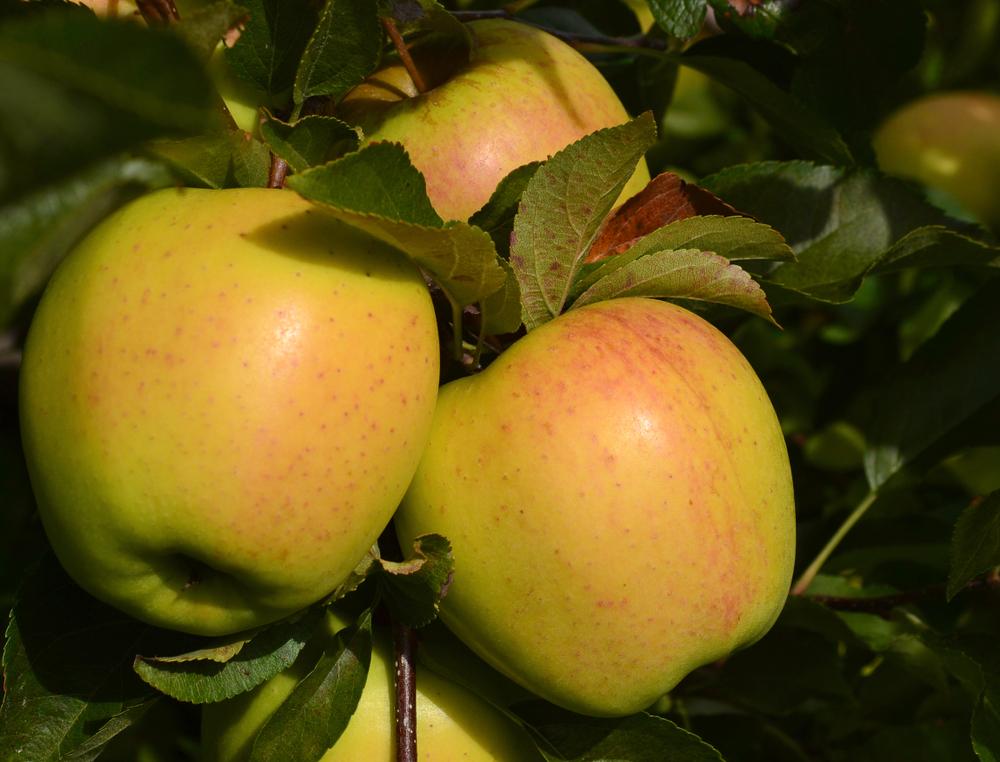
Tagawa’s Golden Delicious apple trees will mature to about 15′ high and 12′ wide, slightly larger than the Red Delicious. Like all fruit trees, the Goldens will need to be in full sun and well-drained soil.
These apples are described as crunchy and sweet. They’re most often eaten fresh but are also fine for baking and making applesauce. Golden Delicious should be ready for harvest starting in early fall.
While Josh highly recommends both the Red and the Golden Delicious, his suggestions don’t stop there. MacIntosh is high on his list, too.
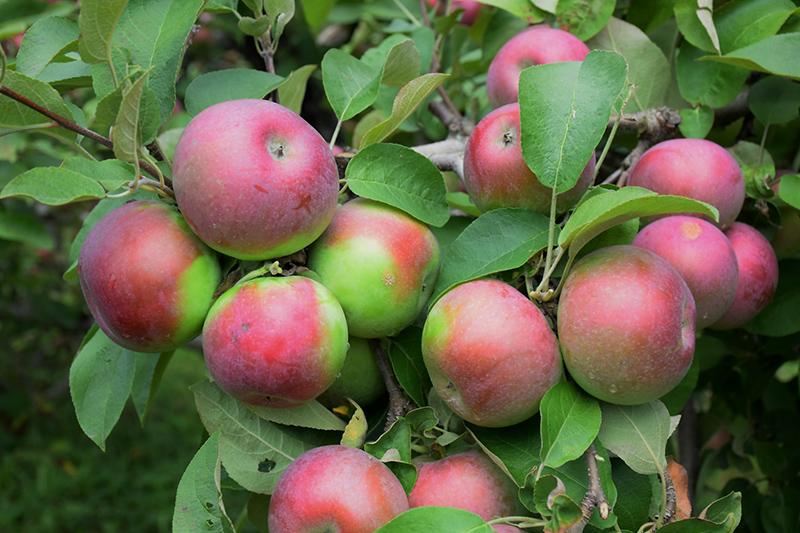
MacIntosh apples have been around for more than 200 years, and are the official tree of Canada where they were first cultivated. The “Macs” are especially cold hardy and are known for their prolific crops of slightly tart fruit from early to mid-fall. The fruit is described as tart and crisp. They’re great for eating fresh or for cooking and baking.
Tagawa’s semi-dwarf MacIntosh will be roughly 15′ tall and wide. I’m pretty sure all those amazing pies my grandmother was so famous for used this wonderful vintage variety.
Plums
Josh says plums are one of the most dependable fruit trees in our area and with proper care, will usually produce a good crop every year. They usually require a second plum tree nearby for cross-pollination.
Stanley plum trees produce a heavy crop of beautiful large purple-blue plums with yellow flesh by late summer, perfect for eating fresh, cooking, baking, drying, or preserves.
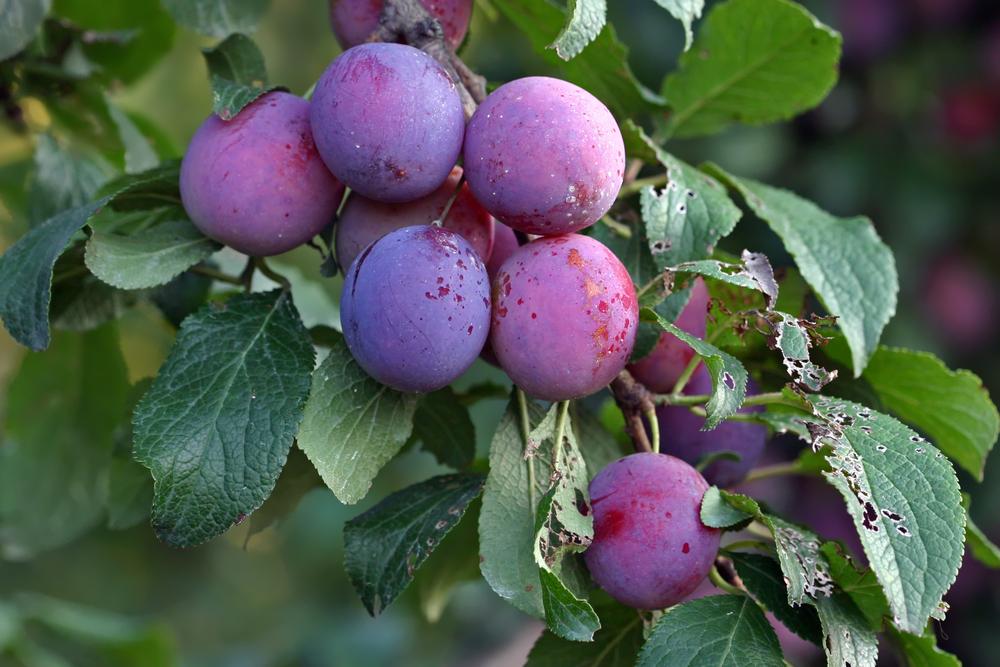
Stanley plum trees will grow to about 20 feet tall and wide. With their clusters of fragrant white flowers in spring, Stanley plum trees are also prized for their ornamental value.
Mount Royal plums also have great ornamental value with their abundance of showy white flowers in the spring. The blossoms are especially attractive to pollinators.
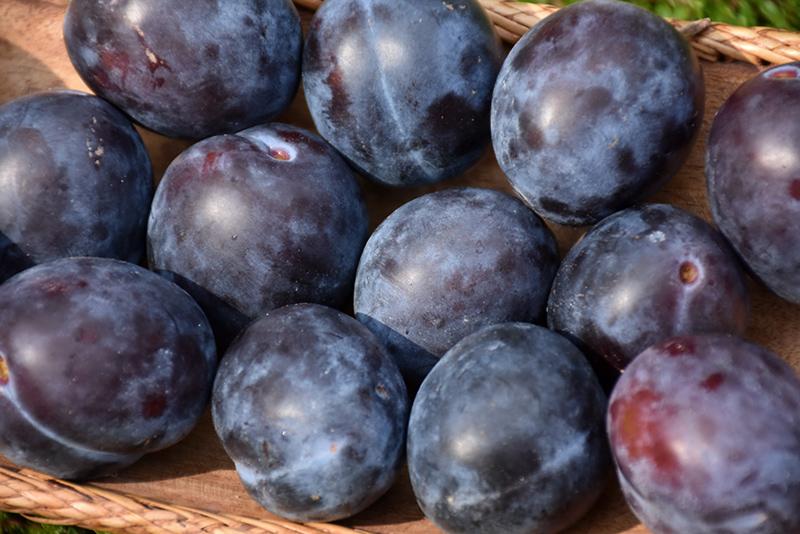
Mount Royal trees mature to about 12′ tall and wide. Even though they’re much smaller than their Stanley cousins, they still produce a heavy crop by late summer.
Cherries
Cherry trees can produce either sweet or sour fruit and should be chosen based on what the grower intends to do with the harvest. Josh says the sour cherries are more dependable than sweet cherries, so we’ll start there.
Montmorency cherries are easily the most popular sour cherry for this area. They produce a heavy crop of bright red fruit by mid-summer. That abundant harvest is excellent for cooking, baking, juicing, or making preserves.
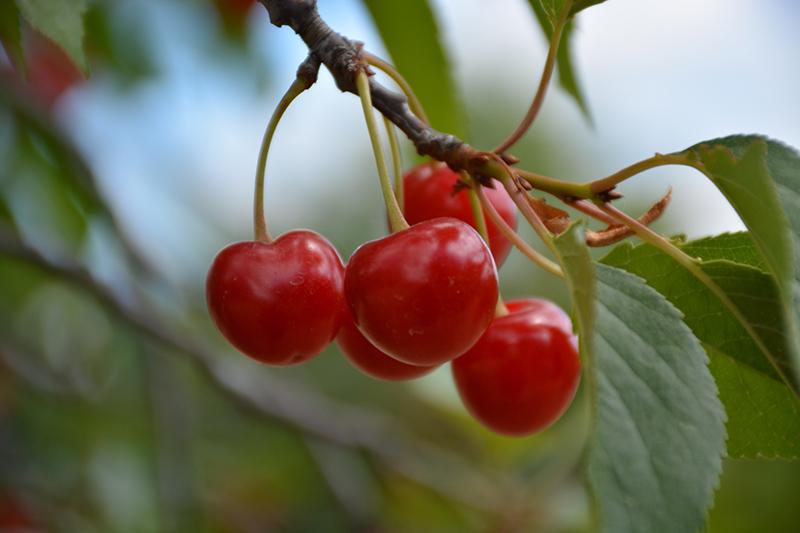
Montmorency cherry trees mature to 12′ high by 10′ wide. Their ornamental value is enhanced by bright orange foliage in the fall.
Montmorencies do not need a second cherry tree for cross-pollination.
Josh says that while sour cherries are more reliable in this area, for those wanting a sweet cherry, he’d recommend the Stella variety.
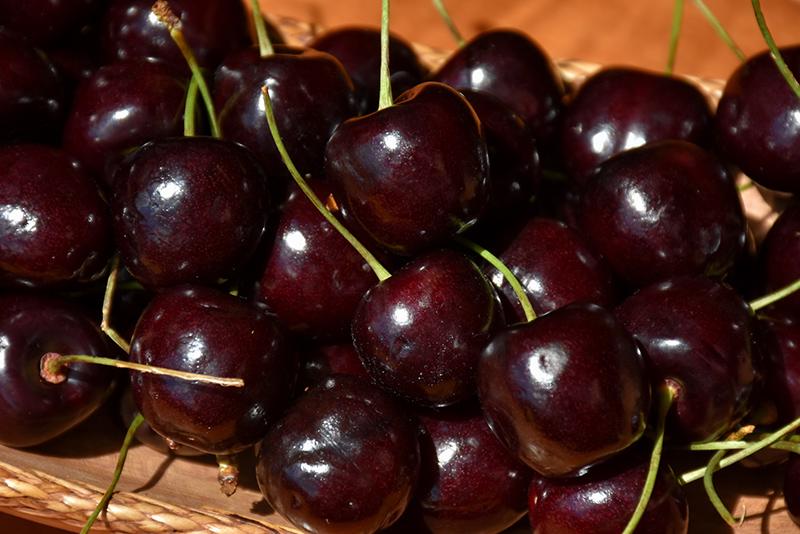
Stellas produce sweet and juicy deep red fruit with crimson red flesh ready for harvest by late summer. Note: Cherries are just as popular with the birds as they are with people!
Stella cherry trees mature to 15′ tall and 12′ wide. Like the Montmorency cherry, Stella cherry trees do not require a second tree for proper pollination.
Peaches
Peaches are right at home in parts of western Colorado but can be a bit more challenging this side of the Divide. The main problem with peaches here is their habit of blooming early and losing their blossoms to a late spring freeze. Certain diseases can also become a problem. But Josh says that for people determined to try their luck with peaches in this area, there are some he would recommend. Let’s take a look at two of them.
Contender is on Josh’s list of peaches worth trying. These peaches are a beautiful gold color with a scarlet blush, ready for harvest in mid-summer.
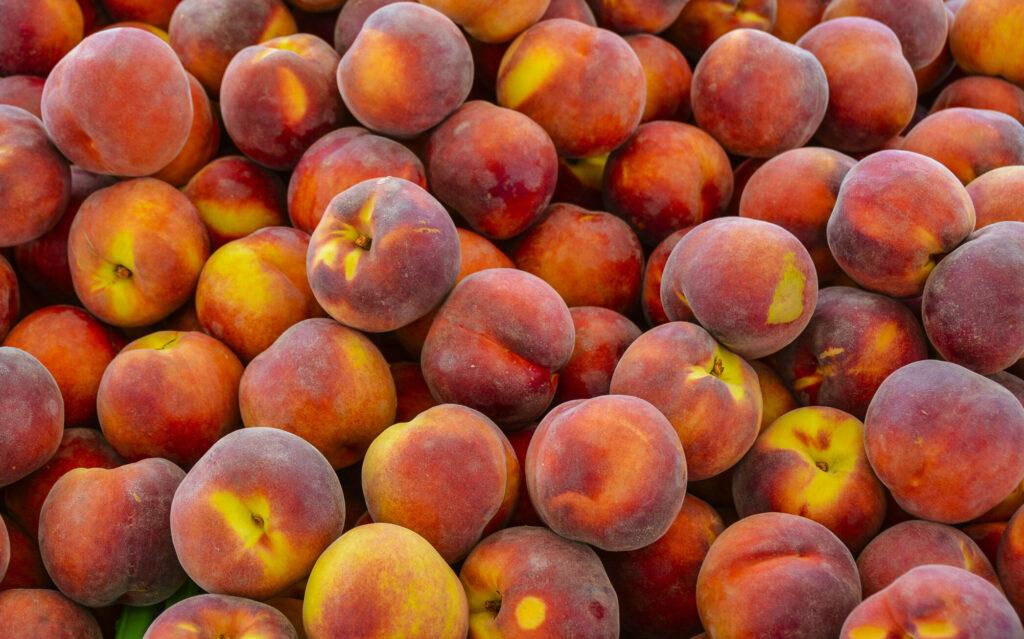
Contenders bloom a bit later than other varieties, helping to avoid late season freezes. The fruit is described as sweet and tangy, with hints of mango. Contender peaches cover all the bases and are routinely used for eating fresh, cooking, baking, canning or making preserves. Contenders also have a bit more disease resistance than other peach varieties.
Contender peach trees mature to 10′ tall and wide. Most peaches in Colorado don’t require a second tree for cross-pollination, but Josh says both the harvest and the fruit itself will be larger if a second tree is available nearby.
Elberta is a classic name in peach-tree culture. These peaches are famous for being sweet and juicy and are excellent in almost any application, from eating fresh to baking or canning.
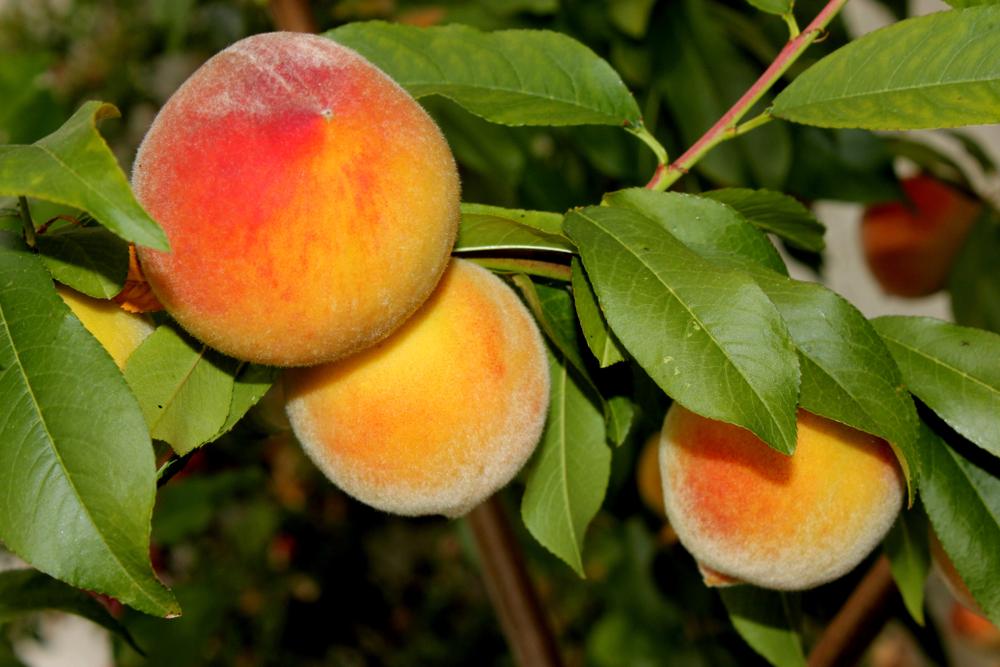
Elberta peach trees bloom earlier than Contenders, making them more likely to be nipped by a late freeze, but with a bit of luck from Mother Nature, the Elberta crop should be ready for harvest by midsummer.
These trees will mature to 15′ tall and 12′ wide.
Have questions about growing fruit trees? Ask away!
Tagawa Gardens’ Nursery Department is fully stocked with a wide variety of fruit trees. Our Nursery staff will be happy to help you choose the right trees for your setting… making those memories of backyard harvests to come just a matter of sunshine and time.
Want to learn more about fruit trees for Colorado? Click here for CSU Extension’s fruit tree fact sheets!
